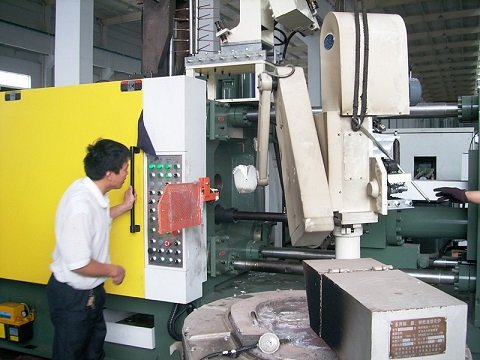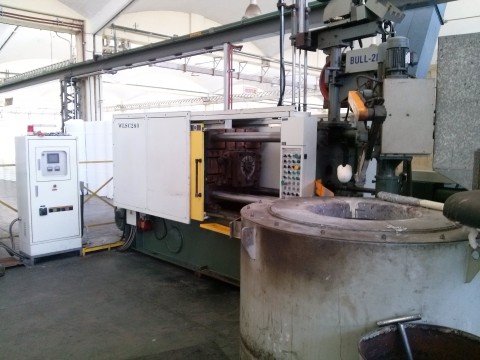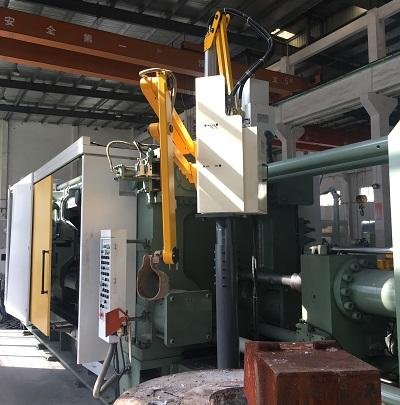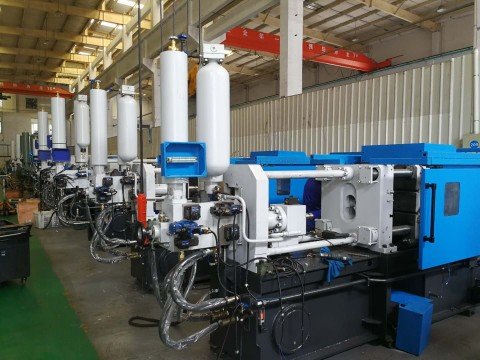Improve production efficiency, and enhance the economic benefits of enterprises. The formulation and implementation of safety operating rules of die-casting machines are important measures to ensure production safety. Operators need to strictly abide by them.
The safety accidents of die-casting machines often cause by illegal operations, failure of safety protection devices, and inadequate safety management. Enterprises should start by strengthening safety training, improving safety facilities, enhancing hazard investigation. And also standardizing operating procedures to effectively improve the safety level of die-casting operations and prevent similar accidents from occurring.
Die casting safety operation rules include operation training, machine inspection, safe operation, maintenance and care and so on. The detailed rules are as following aspects:

Operation training
Ensure that the operator fully understands the safe operating procedures. Including machine controls, emergency procedures, proper handling of molten metal, maintenance protocols. And the use of personal protective equipment (PPE).
Operator qualification
The operator of the die-casting machine should undergo professional training. They should familiar with the operating procedures and maintenance requirements of the equipment. At the same time, hold relevant equipment operation certificates, in compliance with the relevant provisions of GB/T 19001. In addition, operators require to complete annual safety training and comply with the relevant requirements of GB/T 28001.
Training content
Operators need to master the operating principles, safety precautions, and operating procedures of the die-casting machine. Understand the operating status of the equipment, ensure the normal operation of the machine. Clean up debris around the machine, and maintain a clean working environment.
Practical experience
Operators usually need to have certain practical experience. Such as more than 2 years of experience in die-casting production operations. Familiar with the principles of die-casting machine use and mold related operations.
Continuing education
Enterprises should regularly organize skill training and safety education for operators to improve their operational level and safety awareness. Thus to ensure that they have the necessary skills and knowledge.

Wear appropriate personal protective equipment
The operator should wear appropriate PPE, including safety glasses, heat-resistant gloves, protective clothing and safety shoes.
Basic protective equipment
Operators must wear basic protective equipment. Such as safety helmets, protective goggles, protective gloves, and protective clothing. Thus to protect themselves from risks such as mechanical injury, high temperatures, and splashes.
High temperature protection
In operations involving high-temperature molten metals. Operators should wear fire-resistant clothing (heat-resistant above 700 ℃), insulated asbestos gloves, protective face shields, etc. To prevent burns from high temperatures.
Special protection
During the magnesium alloy die-casting process, due to its flammable and explosive properties, operators also need to wear protective masks. And thermal insulation clothing, safety shoes, etc. to ensure safe operation in high temperature, splashing, and harmful gas environments.
Selection of protective equipment
Choose appropriate protective equipment based on the operating environment and material characteristics. For example, before entering the furnace to slag, it is necessary to wear insulation clothing, insulation masks, safety helmets, safety shoes, foot protection, gloves, etc.
Machine inspection
Before operation, you need to ensure that all parts are operating normally. Especially the elbow of the clamping mechanism, the lubrication system, the safety protection device and the travel switch.
Hydraulic system inspection
Daily check the hydraulic oil level. The pipeline leakage, and loose connection fasteners to ensure that the hydraulic system pressure is normal.
Check the oil pressure gauge indication, oil cylinder and oil circuit board for oil leakage every week. Replace the hydraulic oil and clean the oil tank every year.
Electrical system inspection
Daily check whether the external circuit wire ends are loose. Whether the switches at all positions are intact? Whether the control box relays, indicator lights, and solenoid valves are working properly?
Check the electrical wiring for integrity every week, and inspect limit switches and induction switches every month.
Mechanical structure inspection
Daily check whether the hinges, movable seats, and templates are clean, have good parallelism, and whether the screws are loose. Check the mold adjustment gear, oil cylinder, and oil circuit board for wear every week. That to ensure smooth operation of the mold adjustment mechanism.
Safety protection device inspection
Daily check whether the safety door, emergency stop button, and limit switch are effective? It to ensure that the safety protection device is working properly.

Safe operation
When operating the die casting machine, you should obey following safe oprations:
Equipment start stop control
- No load start:Run the oil pump for 13 minutes before testing again. Cotton yarn needs to be padded for air injection in the cold chamber machine. And the punch need to remove in the hot chamber machine.
- Shutdown specifications: Stop the pump → Turn off the power → Stop the water supply when the cooling equipment reaches below 50 ℃.
Molten metal operation
- Alloy materials need be dry. And it is forbidden to use recycled materials with water/oil stains to prevent splashing and scalding.
- Metal liquid filling should avoid from being too full, and people are prohibited from standing in the parting surface area.
Operation protection measures
- Adjust molds, clean equipment, and manually pick up parts (using tools).
- The body part enters the mold parting surface or the range of motion mechanism.
- The safety door must be closed, and the interlocking device ensures that the mold closing function fails when the door is opened.

Maintenance and care
Clean the machine surface regularly, especially the elbow of the clamping mechanism.Ensure that the lubrication system has sufficient lubricating oil and check its lubrication function.
Lubrication system maintenance
Check the lubrication system daily to ensure that the oil distributor is intact, the conveying pipeline is unobstructed, and the lubricating oil volume is sufficient. Inject lubricating oil once a week to all lubrication parts, especially to machine hinges, movable seats, templates, and other parts.
Cooling system maintenance
Check the cooler daily for blockages or leaks to ensure that the cooling water temperature is normal. Clean the cooler weekly and clean the water tower and cooler quarterly.
Oil tank and oil level maintenance
Check the oil level in the tank daily to ensure it is above 80%, with the highest not exceeding the black upper limit of the oil temperature gauge and the lowest not lower than the red warning line.

Emergency handling:
In emergency situations, die-casting machines should quickly take measures such as shutting down, cutting off power and gas sources, evacuating personnel, extinguishing fires, rescuing, and inspecting equipment to minimize casualties and property damage.
Emergency stop
In case of an emergency, the operator should immediately press the emergency stop button, cut off the power, and quickly report to the superior. In addition, when the die-casting machine malfunctions (such as overpressure, pipeline rupture, oil leakage, etc.), it must be stopped immediately, the power must be turned off, and emergency treatment and maintenance must be carried out.
Cut off power and gas supply
In case of leakage or fire, all power switches on site should be immediately cut off, and water and gas sources should be turned off to prevent the accident from escalating
For example, if a zinc liquid leak occurs, the power should be immediately cut off, employees evacuated, and the zinc liquid poured into the front pit to avoid damage to the melting furnace caused by natural cooling.
Evacuation and Alert
The safety director or on-site management personnel should immediately organize the evacuation of personnel at the accident site, carry out self rescue work, and set up alert areas to prevent unrelated personnel from entering.
At the same time, the accident situation should be divided into high-risk areas, medium risk areas, light risk areas, and safety areas, and warning signs should be set up
Conclusion: by strictly following the above safety operating rules procedures, the safety of operators and equipment can be effectively guaranteed, while improving production efficiency and economic benefits.



